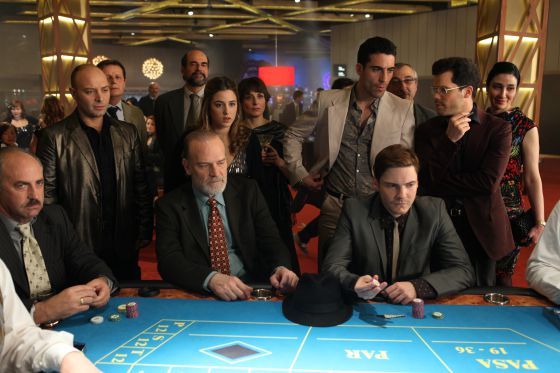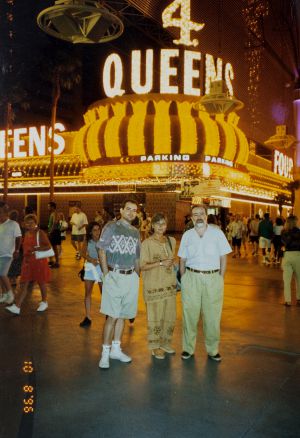Ambos pueden significar "ni" y "tampoco". Entonces ¿cuándo utilizamos "neither" y cuándo utilizamos "either"?
En el siguiente artículo intentaremos aclarar todas estas dudas.
|
Empecemos por “neither” |
-
Pronunciación: “Neither” igual que “either” tiene dos pronunciaciones:
“Neither”: [nider] [naider] ¿Cuál usar? La que te resulte más fácil.
-
Significado y usos: “Neither” [nider] tiene muchos significados y usos que se confunden fácilmente con los de “either”.
Utilizado conjuntamente con “nor” es conjunción; es decir, sirve para unir dos oraciones. En este caso significa: “ni” Por ejemplo: “Ni barato ni bonito”. “Neither cheap nor nice”. [nider chiip nor nais]
|
Nota: Fíjate como “nor” hace la función de segundo “ni”. Recuerda que “nor” se utiliza siempre después de “neither” cuando ambos van juntos. |
Para practicar este uso y significado intenta traducir estas frases: ( Más adelante pongo las traducciones).
-
Ni esto ni lo otro.
-
No me gusta ni el café ni el té.
-
Ni sabe ni le importa.
Puede también significar “tampoco”. Por ejemplo: “I don't want to study. Neither do I.” [ai don't uant tusstadi. Nider duai] Yo no quiero estudiar. Yo tampoco (ni yo). Nota: Fíjate que en español podemos decir “yo tampoco” o “ni yo”. Ahora, veamos si puedes traducir las siguientes frases:
-
¿Viste esa película? No. Yo tampoco.
-
No es nuestra idea. Tampoco es la idea de nuestros amigos.
Puede ser adjetivo; es decir, puede “calificar” una cosa. En este caso significa “ninguno/a ” Por ejemplo: “Neither project was approved.” [nider prochet guas apruvd] Ninguno de los (dos) proyectos fue aprobado. Nota: Fíjate como en este ejemplo “neither/ninguno” va delante del sustantivo “project/proyecto”
Puede ser pronombre; es decir, servir para sustituir a un nombre. En este caso también significa “ninguno/a” pero la función que realiza es distinta. Por ejemplo: “I got two presents, but likedneither.” [aigat tupresents bat laikt nider]. Recibí dos regalos pero no me gustó ninguno. Nota: Fíjate como en este ejemplo “neither/ninguno” reemplaza a “los regalos”. Veamos si puedes hacer las siguientes traducciones:
-
No me gusta ninguno de los dos.
-
Ninguna de ellas es demasiado buena.
-
Ninguno de los dos llegó a ser presidente.
|
Recapitulando: “Neither” [nider] puede significar: ni, tampoco y ninguno/a. |
Traducciones:
-
Ni esto ni lo otro. Neither this nor that.
-
No me gusta ni el café ni el té. I like neither tea nor coffee. Nota: Fíjate como en español la oración empieza por un “no”. En inglés en cambio empieza en sentido afirmativo “I like”. Esto es así porque se entiende que “neither” es negativo y no podemos tener dos negativos en una misma oración, por tanto, la primera parte es (+) y la segunda (-)
-
Él ni sabe ni le importa. He neither knows nor cares.
-
No me pareció ni bueno ni malo. It seemed to me neither good nor bad.
-
¿Viste esa película? No. Yo tampoco. Did you see that movie? No. Me neither.
-
No es nuestra idea. Tampoco es la idea de nuestros amigos. It's not our idea. Neither is it the idea of our friends.
-
No me gusta ninguno de los dos. I like neither of them.
-
Ninguna de ellas es demasiado buena. Neither of them is too good.
-
Ninguno de los dos llegó a ser presidente. Neither of them became president.
|
“Either” |
-
Pronunciación: “Either” igual que “neither” tiene dos pronunciaciones:
“Either”: [ider] [aider] ¿Cuál usar? La que te resulte más fácil.
-
Significado y usos: “Either , al igual que “neither” tiene varios significados y usos. Veremos como en muchas ocasiones el uso de “either” es opcional respecto de “neither”, es decir, la misma idea se puede expresar con “neither” o con “either”.
“Either” [ider] utilizado conjuntamente con “or” es conjunción. En este caso significa “o” , “o bien” . Por ejemplo: “ You can haveeither wine or beer.” [iukan hav ider guainorbiir] “Puedes tomar vino o cerveza”
Ahora intenta traducir las siguientes frases:
-
Ella no sabe hablar ni español ni inglés.
-
Puedes tomar pan o galletas.
-
Pedro o Ana pueden hacerlo.
“Either” [ider] delante de un sustantivo es un adjetivo y significa “cualquiera”. Por ejemplo: “You can use either key.” [iukan yusider ki] Puedes usar cualquiera (de las dos) llaves. Nota: Fíjate como generalmente hablamos de una opción entre dos cosas, no entre varias; aunque pueden ser más de dos. Con más de dos generalmente diríamos “any”, no “either”.
-
Puedes llevar puesto cualquiera de los dos abrigos.
-
Cualquiera (de las dos) ruedas servirá.
-
Puedes comerte cualquiera de los dos trozos de tarta.
“Either”[ider] puede ser pronombre, es decir, ser utilizado para sustituir a un “nombre”. En una frase afirmativa significa “cualquiera”. En una frase negativa significa “ninguno/a”. En una pregunta significa “alguno/a”. Veamos ejemplos:
-
Either of them is good. [ide of dem isgud] Cualquiera
ellos es bueno.
-
You can take either of the two. [iu kanteikiderof detú]Puedes coger cualquiera de los dos.
-
I can't read either of those books. [ai kentrid ider ofdous buks] No puedo leer ninguno de esos libros.
-
Does/ o Do (opcional) either of you know him? [das/ du ider of iu nou him] ¿Alguno de ustedes le conoce?
Más traducciones:
-
Cualquiera de los dos servirá..
-
No conozco a ninguna de ellas.
-
¿Alguno de ustedes (dos) puede hacer esto?
“Either” [ider] como adverbio (tras un verbo) puede significar“tampoco” y también “ni siquiera” dependiendo de lo que queramos decir. Por ejemplo: “Ann can't dance and he can't either.” Ana no sabe bailar ni él tampoco. Nota: La misma idea la podemos expresar con “neither” En este caso diríamos: “Neither Ann nor he can dance”. “Ni Ana ni él saben bailar”. Otro ejemplo, ahora con el significado de “ni siquiera”. “and she doesn't have to do anythingeither”. Y ella ni siquiera tiene que hacer nada.
|
Recapitulando: “Either” [ider] Puede significar: ni, o, cualquiera, ninguno/a, alguno/a, tampoco, ni siquiera. |
Resultados de las traducciones con “either” [ider].
-
Ella no sabe hablar ni español ni inglés. She can't speak either Spanish or English.
-
Puedes tomar pan o galletas. You can have either bread or cookies (biscuits).
-
Pedro o Ana pueden hacerlo. Either Peter or Ann can do it.
-
Puedes llevar puesto cualquiera de los dos abrigos.You can wear either of the two coats.
-
Cualquiera (de las dos) ruedas servirá. Either wheel will do.
-
Puedes comerte cualquiera de los dos trozos de tarta.You can eat either piece of cake.
-
Cualquiera de los dos servirá. Either of them will do.
-
No conozco a ninguna de ellas. I don't know either of them.
-
¿Alguno de ustedes (dos) puede hacer esto? Either of you can do this?
Actualización “neither/either” 25 de febrero 2007
Diferencias en el uso de “neither”-”either”
A veces, en mi empeño por hacer las explicaciones más sencillas, me pongo a ver si existe alguna regla que facilite la comprensión del tema. Creí que podía decir la regla de si el verbo está en negativo, usamos “either” y cuando está en afirmativo utilizamos “neither” (ambos tendrían el significado de “tampoco”). Posteriormente me di cuenta que no es siempre así. Por tanto, es posible utilizar alternativamente “neither” o “either” con el significado de “tampoco” tanto con frases negativas como afirmativas. Veamos ejemplos:
Ejemplo 1. I can't dance. [ai kant dans] I can't either.[ai can't ider]No sé bailar. Yo tampoco.
Ejemplo 2. I can't dance. [ai kant dans] Me neither. [mi nider] (informal)
Ejemplo 3. I can't dance. [ai kant dans] Me either [mi ider] (informal)
Lo siento, pero no hay diferencias muy notables. Sólo que “me either” [mi ider] es muy informal en el caso de que vaya después de una frase en negativo (ejemplo 3). En cualquier caso, para pasar un examen lo mejor es seguir lo dice vuestro libro de texto.
Both (of) -Neither
La utilización de neither y both no presenta problemas para los hispano hablantes pues es similar al español si pensamos que“both” [bouz] significa “ambos” y tiene un sentido afirmativo.“Neither” en cambio, significa “ninguno/a” y sirve para negar. Veamos un ejemplo.
Ejemplo 1:
-“I know both authors” [ai nou bouz ozors] . Conozco ambos autores.
“Neither” dijimos que significa “ninguno” así que se puede utilizar para negar esta misma frase.
-“I know neither author.” [ai nou nider ozor] No conozco a ninguno de los dos autores.
Nota: Tanto “both” [bouz] como “neither” [nider] hacen referencia a dos cosas, personas o actividades.
Ejemplo 2:
-“I like both of them” [ai laik both ofdem] Me gustan ambos. Nota:Fíjate que he utilizado “of” porque tengo el pronombre “them”. Si tuviera después de" both" un verbo o un sustantivo diría, por ejemplo: “I like both men “ sin “of”. Me gustan ambos hombres.
- “I like neither of them.” [a laik nider ofdem] No me gusta ninguno.
Recuerda: Both [bouz] “ambos” se utiliza en sentido afirmativo.Neither [nider] significa “ninguno” y se utiliza para negar.

































 Ice cream man Jamie Campbell serves from the world’s first amphibious ice cream van, the HMS
Flake 99 (PA)
Ice cream man Jamie Campbell serves from the world’s first amphibious ice cream van, the HMS
Flake 99 (PA)
 Battersea Power Station gets a look at the ice cream van (PA)
Battersea Power Station gets a look at the ice cream van (PA)
 The HMS Flake 99 passes the Houses of
Parliament (PA)
The HMS Flake 99 passes the Houses of
Parliament (PA)

